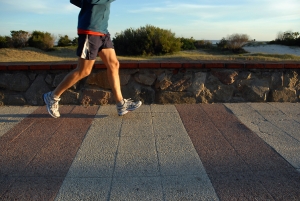In last month’s sports medicine bulletin from the American College of sports medicine, there was some interesting information about how our body responds to exercise after the age of 50. The following are a few of the key points:
- Strength training should be a part of a workout program because if people strength train, they can maintain their lean muscle up until about age 70. However, if women do not strength train, they are likely to lose up to 10 pounds of lean body mass (muscle) per decade.
- As I have written in the past, muscle is an important component to metabolism. Because muscles require energy (or calories) to maintain themselves, you will burn more calories throughout the day if you maintain your muscle mass or build muscle. In fact, building muscle is the only way to speed up metabolism. So, strength training can be the best ways to prevent our metabolism from slowing down as we age.
- Spare your joints by limiting explosive exercises (such as high jumps).
- We lose some fast-twitch muscles as we age (these are the ones that help us sprint). So, if you are an athlete at heart and want to remain competitive, endurance activities may be a better fit at this point in time.
- Since the body takes longer to heal as we age and has a tendency to get stiff, spend more time on warm ups and cool downs.
Do not use age as a reason/excuse to stop exercise. After all, studies have also found that even 90-year olds can build muscle, but if you don’t use it you will lose it. However, you may want to make a few adjustments to the types of exercises to keep your joints healthy and feel your best.
“Tweaking an Exercise Routine to Stay Strong After 50,” American College of Sports Medicine, Sports Medicine Bulletin, February 18, 2014.
